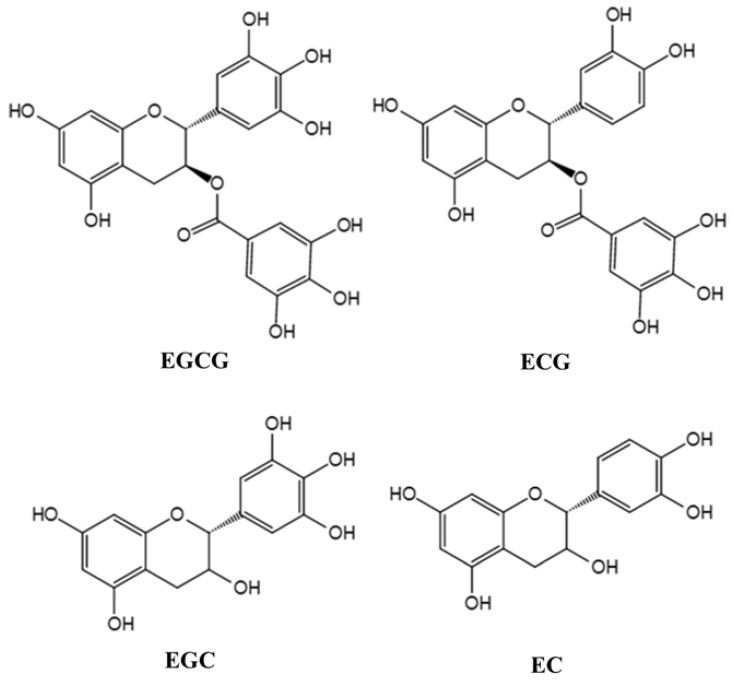Figure 1.
Molecular structure of the major TPs. The chemical conversion of intestinal microorganisms to biological heterologous matter, including food, industrial chemical pollutants, and drugs, directly affects their biological activity, toxicity, and efficacy. The metabolism and absorption of dietary polyphenols in the human body are also mainly dependent on the biotransformation of intestinal microorganisms [12]. Some of the polyphenols consumed by the human body directly enter the colon, the other part is converted into type I metabolites such as lactone, phenolic acid, and aromatic acid. Type II metabolites like glucuronide sulfate and oxy methyl derivatives then re-enter the colon through the small intestine. In the colon, polyphenols are glycosylated under the action of bacterial enzymes and then are dehydroxylated and demethylated by intestinal microorganisms into intermediate metabolites [13]. To take it further, these metabolites are converted into small molecular compounds, which enter the hepatointestinal circulation or systemic circulation to perform various physiological functions. TPs are converted into small molecular phenolic acids under the action of intestinal microorganisms and then are methylated, sulfated, sulfated, or ringed into the bloodstream [14]. Polyphenols have been regarded as the third largest regulator of intestinal health besides probiotics and probiotics. Plenty of researchers have found that plant polyphenols can maintain the homeostasis of the intestinal microenvironment [15], stimulate the growth of symbiotic and beneficial microbiota, and inhibit pathogenic strains [16]. For instance, studies have shown that TPs and their derivatives significantly inhibited the growth of some pathogenic bacteria such as Clostridium perfringens and Bacteroides spp., but had little effect on symbiotic anaerobes, such as Bifidobacterium spp. and Lactobacillus spp. [17]. Therefore, this paper reviews the interaction between intestinal flora and TPs, focusing on the regulatory mechanism of both in neuroprotection.

